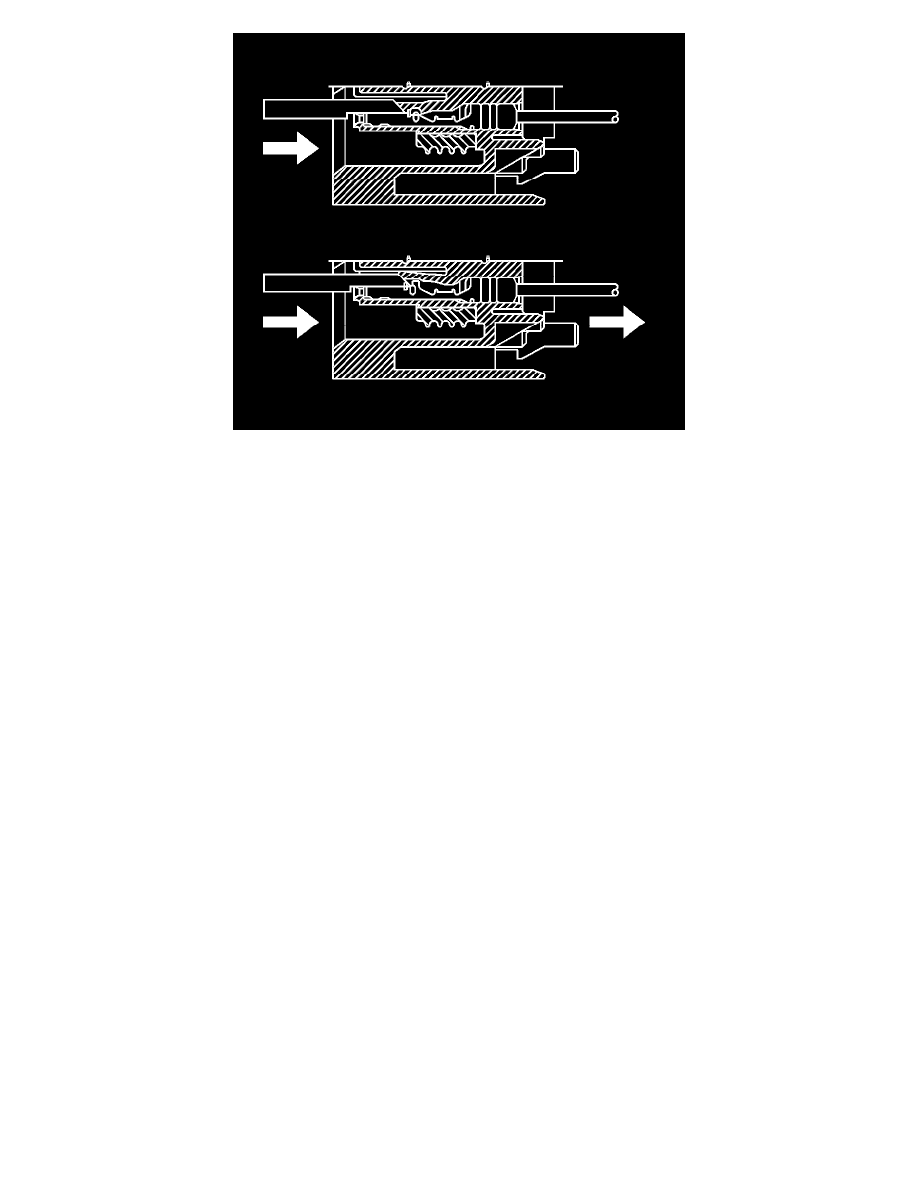Avalanche 4WD V8-5.3L (2011)

9. The illustration shows a cutaway view of the connector to aid the technician in releasing the terminal retainer.
10. Repair the terminal by following the Repairing Connector Terminals See: General Electrical Diagnostic Procedures/Connector Repairs/Repairing
Connector Terminals procedure.
11. Insert the repaired terminal back into the cavity. Repeat the diagnostic procedure to verify the repair and reconnect the connector bodies.
Terminal Insertion Procedure
After the terminal is replaced, perform the following procedure in order to insert the terminal.
1. Slide the new terminal into the correct cavity at the back of the connector.
2. Push the terminal into the connector until it locks into place. The new terminal should be even with the other terminals. Ensure that the terminal is
locked in place by gently pulling on the wire.
3. To assemble the connector, reverse the connector disassembly procedure.
Terminal Position Assurance Locks
Terminal Position Assurance Locks
The terminal position assurance (TPA) insert resembles the plastic combs used in the control module connectors. The TPA keeps the terminal securely
seated in the connector body. Do not remove the TPA from the connector body unless you remove a terminal for replacement. If the TPA is removed, be
sure to reinstall it before reconnecting the connector.
Circuit Protection - Circuit Breakers
Circuit Protection - Circuit Breakers
A circuit breaker is a protective device that is designed to open the circuit when a current load is in excess of the rated breaker capacity. If there is a short
or other type of overload condition in the circuit, the excessive current will open the circuit between the circuit breaker terminals. Two types of circuit
breakers are used.
Circuit Breaker
-
This type opens when excessive current passes through it for a period of time. It closes again after a few seconds, and if the cause of the high
current is still present, it will open again. The circuit breaker will continue to cycle open and closed until the condition causing the high current is
removed.
Positive Temperature Coefficient (PTC) Circuit Breaker
-
This type greatly increases its resistance when excessive current passes through it. The excessive current heats the PTC device, as the device heats
its resistance increases. Eventually the resistance gets so high that the circuit is effectively open. Unlike the ordinary circuit breaker the PTC unit
will not reset until the circuit is opened, by removing the voltage from its terminals. Once the voltage is removed the circuit breaker will re-close
within a second or 2.
